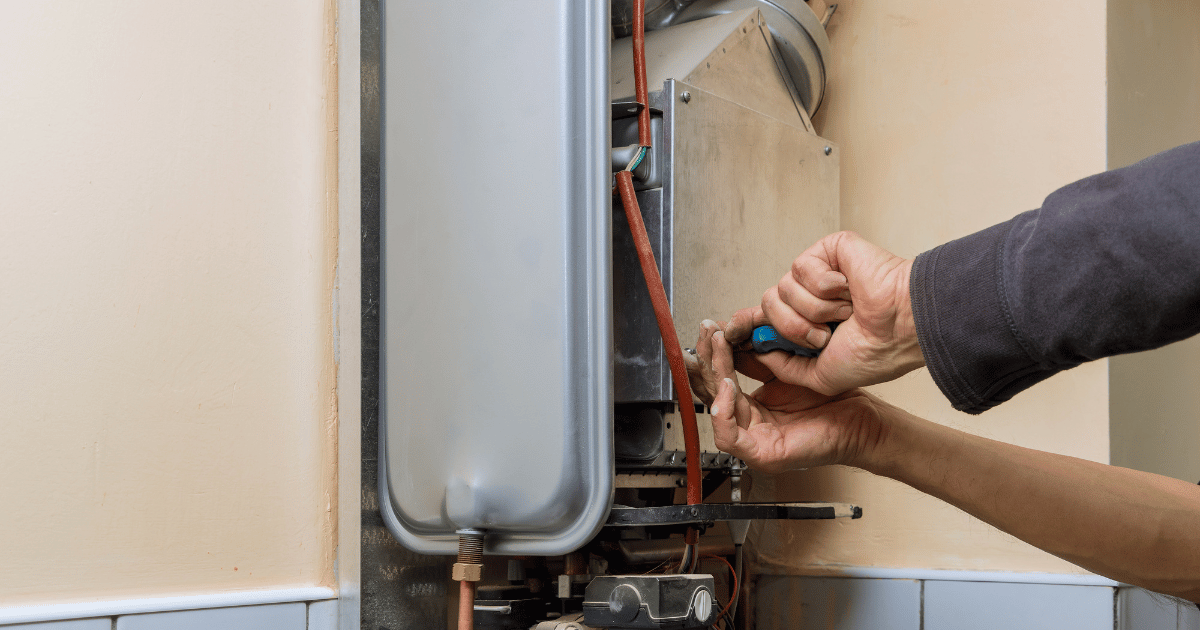Easy Steps to Caring for Your Home's Hot Water System
Easy Steps to Caring for Your Home's Hot Water System
Blog Article
They are making a number of good pointers about How to Maintain a Hot Water Heater in a Few Simple Steps as a whole in the content further down.

Warm water is necessary for day-to-day comfort, whether it's for a refreshing shower or cleaning dishes. To guarantee your warm water system runs efficiently and lasts longer, normal upkeep is vital. This short article offers practical pointers and understandings on how to keep your home's warm water system to avoid interruptions and costly repairs.
Intro
Maintaining your home's warm water system may seem overwhelming, however with a few simple actions, you can ensure it runs smoothly for years to come. This overview covers whatever from comprehending your hot water system to do it yourself upkeep suggestions and recognizing when to call in professional assistance.
Significance of Keeping Your Hot Water System
Regular upkeep not only extends the life-span of your hot water system yet also guarantees it runs effectively. Neglecting upkeep can lead to reduced performance, higher power expenses, and also premature failing of the system.
Signs Your Hot Water System Demands Maintenance
Understanding when your hot water system requires attention can stop significant problems. Watch out for signs such as inconsistent water temperature, unusual sounds from the heating unit, or corroded water.
Recognizing Your Hot Water System
Before diving right into upkeep tasks, it's handy to understand the fundamental parts of your hot water system. Commonly, this includes the hot water heater itself, pipes, anode rods, and temperature level controls.
Monthly Maintenance Tasks
Normal monthly checks can help capture small concerns before they rise.
Flushing the Hot Water Heater
Purging your water heater eliminates sediment build-up, improving performance and prolonging its life.
Checking and Replacing Anode Rods
Anode rods stop corrosion inside the storage tank. Evaluating and changing them when broken is crucial.
Inspecting and Readjusting Temperature Setups
Readjusting the temperature level settings makes certain ideal efficiency and safety and security.
Do It Yourself Tips for Upkeep
You can do numerous upkeep jobs on your own to keep your warm water system in top problem.
Looking for Leakages
Consistently examine pipes and links for leaks, as these can result in water damage and greater expenses.
Examining Pressure Alleviation Valves
Evaluating the pressure safety valve ensures it works correctly and prevents too much stress accumulation.
Insulating Pipelines
Shielding warm water pipelines lowers warm loss and can conserve energy.
When to Call a Specialist
While DIY maintenance is beneficial, some issues call for professional know-how.
Facility Problems Needing Expert Aid
Instances include significant leaks, electrical issues, or if your hot water heater is continually underperforming.
Regular Expert Upkeep Advantages
Expert upkeep can include extensive assessments, tune-ups, and making sure conformity with safety and security standards.
Conclusion
Regular maintenance of your home's hot water system is necessary for effectiveness, durability, and cost savings. By adhering to these pointers and recognizing when to look for specialist help, you can guarantee a reliable supply of warm water without unforeseen disruptions.
How to Maintain an Instant Hot Water Heater
Before tinkering with your hot water heater, make sure that it’s not powered on. You also have to turn off the main circuit breaker and shut off the main gas line to prevent accidents. Also turn off the water valves connected to your unit to prevent water from flowing into and out of the appliance. 2. When you’re done, you have to detach the purge valves’ caps. These look like the letter “T†and are situated on either side of the water valves. Doing so will release any pressure that has accumulated inside the valves while at the same time avoid hot water from shooting out and burning your skin. 3. When the purge valves’ caps are removed, you have to connect your hosing lines to the valves. Your unit should have come with three hoses but if it didn’t, you can purchase these things from any hardware or home repair shops. You can also get them from retail stores that sell water heating systems. Read the user’s manual and follow it to complete this task properly. When the hosing lines are connected, open the purge port’s valves. 4. You should never use harsh chemical cleaners or solutions when cleaning your unit. Make use of white vinegar instead. It should be undiluted and you’ll probably use about 2 gallons. 5. Now flush your water heater. This task should probably take about 40 minutes. We can’t give you specific directions for this because the procedure is carried out depending on the type, model and brand of your heater. With that being said, refer to the user’s manual. 6. When you’re done draining the unit, you have to turn off the purge port valves again. Remove the hosing lines that you earlier installed on each of the water valves. Put the valve caps (purge port) back in their respective places and be very careful so as not to damage the rubber discs that are found inside these caps. 7. Now that everything’s back in place, check your user’s manual again to find out how to reactivate your water heating system. 8. Once it is working, turn one of your hot water faucets on just to let air pass through the heater’s water supply pipes. Leave the tap on until water flows smoothly out of it. https://www.orrplumbing.com/blog/2014/september/how-to-maintain-an-instant-hot-water-heater/

I'm just very interested by Tips For Maintaining Your Hot Water Heater and I am praying you enjoyed reading our entry. Do you know someone else who is fascinated about How to Maintain a Hot Water Heater in a Few Simple Steps? Take a moment to promote it. I am grateful for your time. Come back soon.
Schedule Services Report this page